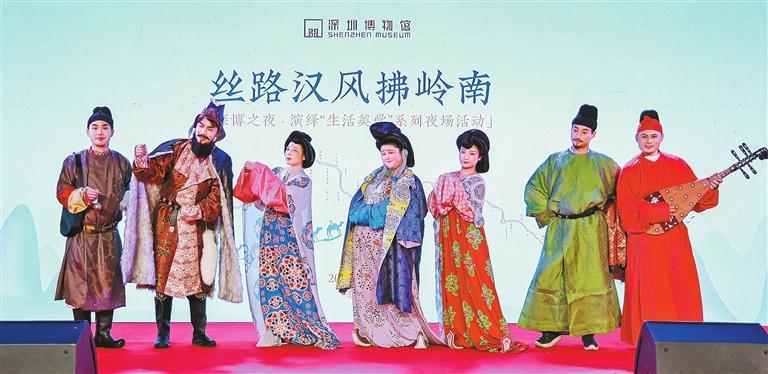
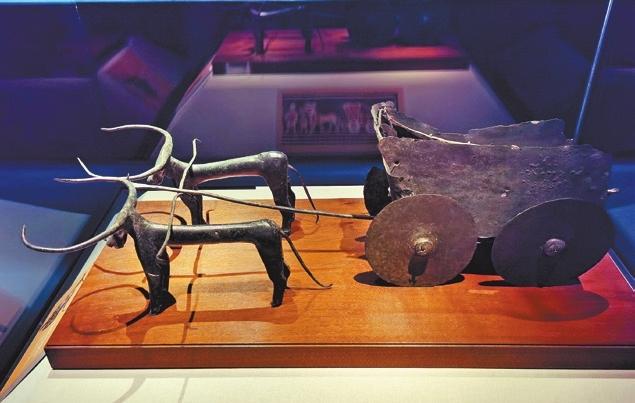
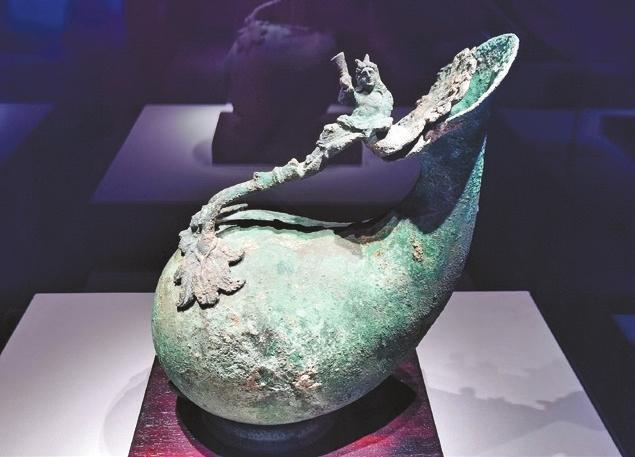
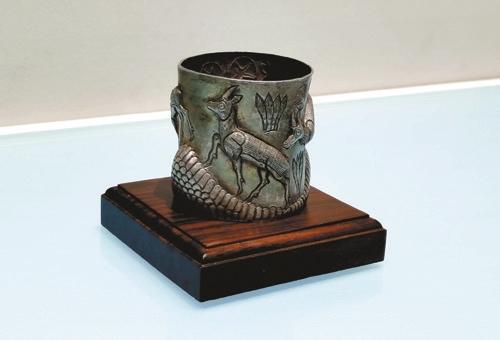
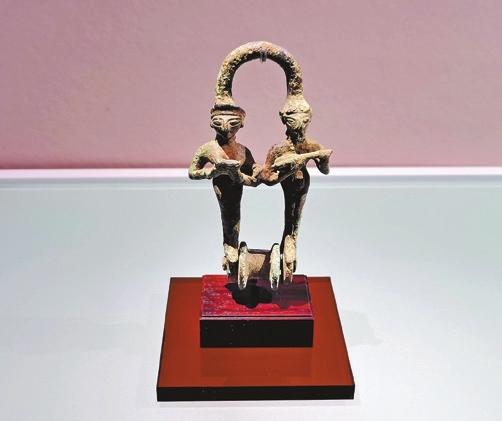
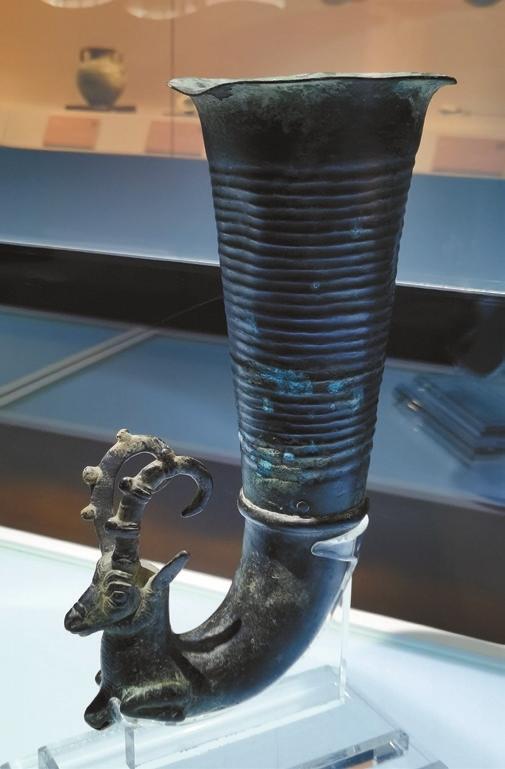
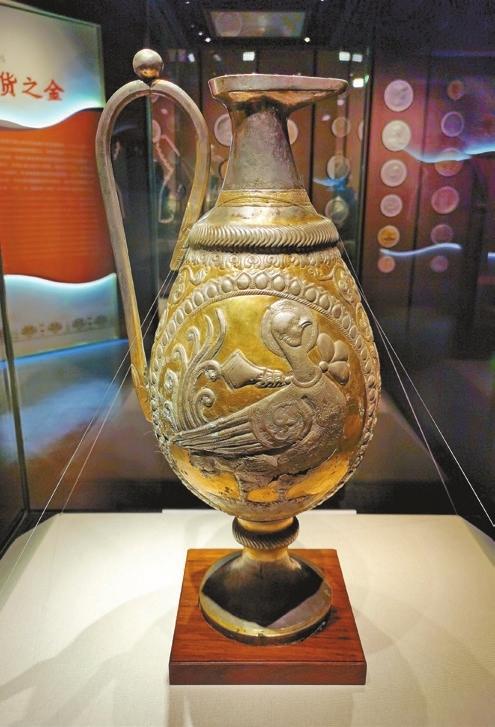
Cao Zhen caozhen0806@126.com LOCAL art enthusiasts and residents braved the freezing cold weather Friday night and gathered at the Shenzhen Museum’s Ancient Art Division for a captivating Winter Solstice celebration. The event offered a unique immersion into a blend of ancient Chinese and other Asian civilizations, drawing guests into an evocative night. Many attendees donned attire and makeup in the Tang Dynasty (618-907) style, adding a time-traveling touch to the evening. They enjoyed a gala themed around the Tang culture and the ancient Silk Road, partook in ancient Chinese games, and eagerly thronged the opening of the “Treasures Along the Silk Road — Metallurgical Art of Ancient Asian Civilizations” exhibition. The exhibition showcases 263 remarkable pieces and sets of artifacts from ancient Asian civilizations, sourced from the esteemed collection of the Hirayama Ikuo Silk Road Museum in Japan. Spanning nearly 4,000 years from the Bronze Age to the Middle Ages, these artifacts encompassed regions along the ancient Silk Road, covering West Asia, the surrounding Mediterranean, Central Asia and South Asia. The artifacts bore cultural influences from Mesopotamian, ancient Persian, ancient Greek, ancient Roman, Kushan and Sassanian civilizations. Crafted from gold, silver, copper, iron or tin, these objects once served as ritual items, weaponry, daily implements, statues, seals, accessories and more. The treasures symbolized power and wealth, embodying the wisdom, craftsmanship, beliefs, and aesthetics of ancestors. Among the highlights are the Copper Alloy Ox Cart (3000-2350 B.C.) from the early Sumerian Dynasty in modern Iraq, the Copper Alloy Phiale (1000-605 B.C.) from Neo-Assyrian in modern Iraq, the Copper Alloy Goat-shaped Rhyton (550-330 B.C.) from the ancient Persian Empire in modern Iran, the Copper Alloy Lamp (30-267) from the Kushan Dynasty in Central Asia, and the Gilded Silver Pot (224-651) from the Sassanid Persian Dynasty in modern Afghanistan. These artifacts represent significant milestones in metallurgical innovation, the fusion of artistic styles, and the mutual influence of ancient Asian civilizations. Visitors will not only have the opportunity to admire these rarely seen treasures with exotic decorations and patterns but also gain deeper insights into the origins, evolution, and interactions of these ancient cultures. Throughout the exhibition’s duration, the museum will offer lectures and guided tours, enriching the experience for all attendees. Dates: Through April 7, 2024 Reservations: WeChat miniprogram “深圳博物馆” Venue: Shenzhen Museum’s Ancient Art Division, Futian District (深圳博物馆古代艺术馆) Metro: Line 9 to Hongling South Station (红岭南站), Exit A | 
